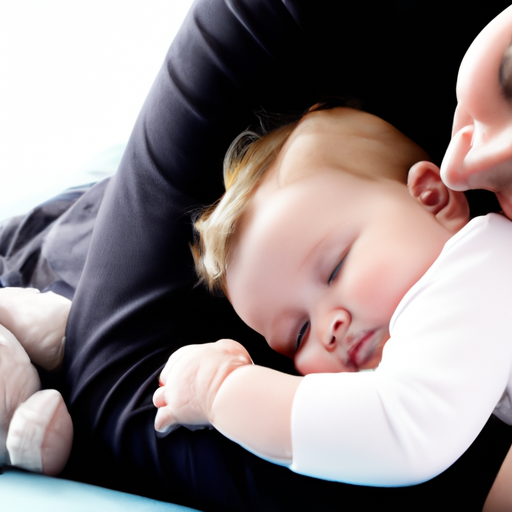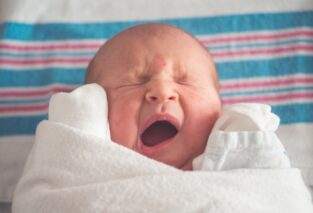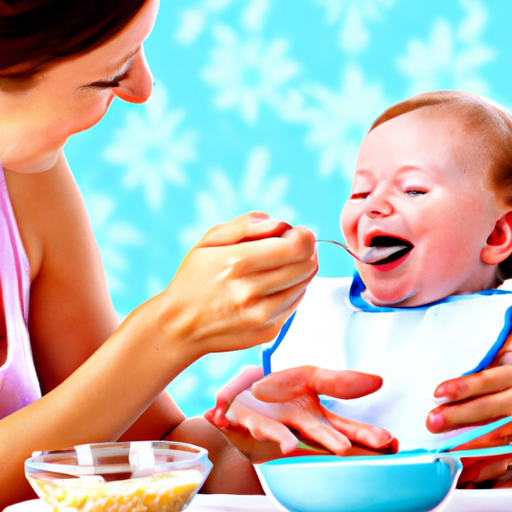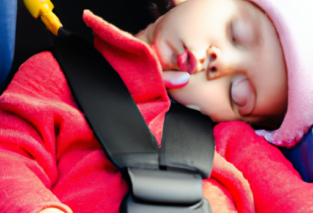Are you a new parent or expecting a baby soon? If so, you might be wondering how to create a safe environment for your little one at home. Baby-proofing is an important step to ensure that your baby can explore and play without any potential hazards. In this article, we will discuss various tips and strategies to baby-proof your home effectively. From securing furniture to covering electrical outlets, you will learn everything you need to know to provide a safe and nurturing space for your baby to grow and thrive. Stay tuned and discover how to create a secure and baby-friendly environment in your home.
Curious to know more about baby-proofing your home? In the upcoming article, we will dive deep into the various ways you can ensure the safety of your baby. We will explore topics such as securing cabinets and drawers, installing safety gates, padding sharp corners, and much more. By implementing these baby-proofing measures, you can have peace of mind knowing that your home is safe and secure for your little one. Whether you live in a small apartment or a spacious house, these tips are applicable to any living space. So, keep reading to learn all the secrets of baby-proofing your home!
Identify Potential Hazards
Understanding the common household hazards
When it comes to baby-proofing your home, the first step is to understand the common household hazards that can pose a danger to your little one. Some of these hazards include sharp edges and corners, loose electrical cords, unsecured furniture, and access to cleaning products or medications.
Assessing each room for potential dangers
To effectively baby-proof your home, it’s important to assess each room for potential dangers. Start by systematically going through each room and identifying any hazards that may need attention. Pay close attention to areas where your child will spend the most time, such as the living room, bedroom, kitchen, and bathroom.
Identifying specific hazards for different age groups
It’s important to keep in mind that the hazards your baby faces will change as they grow older and become more mobile. For example, when your child is a newborn, you may need to focus on securing furniture and ensuring a safe bathing environment. As they start crawling and walking, you’ll need to address hazards like electrical outlets and stairs. Stay vigilant and regularly reassess your baby-proofing measures as your child develops.
Securing Furniture and Large Objects
Anchoring heavy furniture and appliances
One of the main hazards in your home is unsecured furniture and appliances that can tip over and cause injuries. To prevent this, secure heavy furniture and appliances to the wall using furniture straps or brackets. Anchor bookshelves and cabinets to the wall to prevent them from toppling over.
Securing bookshelves and cabinets
Bookshelves and cabinets can pose a serious risk to your child if they are not properly secured. Make sure to install latches or locks on cabinets that contain potentially dangerous items such as cleaning products or medications. Additionally, consider using safety straps to anchor bookshelves to the wall, preventing them from falling over if your child tries to climb them.
Protecting TVs and other large objects from tipping
Large objects like televisions can easily tip over and cause injury. Secure your TVs and other heavy objects to the wall using brackets or straps. Keep cords and cables out of reach by using cord shorteners or cable covers. This will not only prevent the risk of tipping but also reduce the chance of your child pulling on cords and causing objects to fall.
Electrical Safety Measures
Using outlet covers and socket plug protectors
Electrical outlets are a common source of danger for curious little hands. Use outlet covers or socket plug protectors to prevent your child from inserting objects into the outlets. These covers are designed to fit securely into the outlet and can only be removed with the use of a plug.
Securing loose electrical cords and cables
Loose electrical cords and cables can be a tripping hazard for both children and adults. Keep cords out of reach by using cord concealers or tucking them behind furniture. Use cord clips or cable ties to secure cords to the wall or baseboards, preventing your child from pulling on them.
Installing childproof power strip covers
Power strips can be particularly dangerous if your child touches exposed outlets or pulls on cords. Use childproof power strip covers that enclose the entire strip, making it inaccessible to little hands. These covers typically have sliding panels that allow you to route cords in and out while keeping them securely covered.
Protecting Stairways and Railings
Installing safety gates at the top and bottom of stairs
Stairs pose a significant risk for falls, especially for young children who are still learning to navigate them. Install safety gates at the top and bottom of stairs to prevent your child from accessing them without supervision. Make sure the gates are securely attached and have a latch that is not within your child’s reach.
Securing railings and banisters
While safety gates prevent access to stairs, it’s also important to secure the railings and banisters. Check for any loose or unstable railings that could potentially break or give way. Tighten any screws or bolts that are loose and secure any loose parts to prevent your child from leaning or pulling on them.
Covering gaps between railings to prevent squeezing
Ensure that the gaps between railings or banisters are not wide enough for your child to squeeze through or get stuck. Consider using plastic or mesh netting to cover any large gaps. This will provide an additional layer of protection and prevent accidents.

Childproofing Doors and Windows
Installing door and window locks
Doors and windows can be dangerous if your child gains access to areas they shouldn’t be in or if they try to climb out. Install childproof locks on doors and windows to prevent your child from opening them without supervision. Use door and window stops to limit the opening distance and prevent your child from getting their fingers caught.
Using door stoppers or finger protectors
Doors can be a serious hazard for little fingers. Install door stoppers or finger protectors to prevent doors from slamming shut and potentially injuring your child’s fingers. These devices create a soft cushioning effect, reducing the risk of pinches or trapped fingers.
Applying window guards or safety film
Windows can also pose a risk to your child if they are not properly secured. Consider installing window guards or safety film to prevent your child from falling through open windows or accidentally breaking the glass.
Safe Storage and Handling of Dangerous Items
Locking away medications and cleaning products
Medications and cleaning products should always be stored out of reach and in a locked cabinet. These items can be toxic if ingested and should be kept securely locked away to prevent accidental exposure or ingestion.
Storing sharp tools and utensils out of reach
Sharp tools such as knives, scissors, and utensils should be stored in a high cabinet or drawer with a childproof lock. Make sure that any countertop appliances with exposed blades, such as blenders or food processors, are also safely stored and out of reach.
Preventing access to small objects that pose choking hazards
Small objects, such as coins, buttons, or small toys, can pose a choking hazard for young children. Keep these items out of reach by regularly scanning your home for potential hazards and removing any small objects that could be accidentally swallowed.
Cushioning Sharp Edges and Corners
Applying corner guards to protect against head injuries
Sharp edges and corners of furniture pose a risk of head injuries, especially for young children who are still unsteady on their feet. Apply corner guards made of soft material to protect your child from sharp corners. These guards can be easily attached and removed when necessary.
Using edge bumpers on furniture and countertops
Edge bumpers are a great way to protect your child from sharp edges on furniture and countertops. Attach edge bumpers made of foam or rubber to any furniture or countertop edges that could potentially cause injury.
Covering sharp edges of coffee tables and cabinets
Coffee tables and cabinets with sharp edges can pose a danger to your child. Consider using table corner protectors or edge guards to cover any sharp edges or corners. These can be easily attached and provide an extra layer of protection.
Ensuring a Safe Bathing Environment
Using non-slip mats and decals in the bathtub
Bath time can be a fun and relaxing experience for both you and your child, but it’s important to ensure a safe environment. Use non-slip mats or decals in the bathtub to prevent your child from slipping. These mats provide traction and reduce the risk of accidents.
Setting appropriate water temperature
Water temperature is crucial when bathing your child. Always check the water temperature before placing your child in the bath. Consider installing a faucet cover that displays the water temperature to help prevent scalding accidents.
Securing toilet lids and preventing access to cleaning products
Toilets can be a hazard for young children. Ensure that toilet lids are always closed and consider using a toilet lock to prevent your child from opening them. Additionally, keep cleaning products out of reach by storing them in a locked cabinet.
Creating a Child-Friendly Kitchen
Securing cabinet doors with childproof locks
The kitchen is full of potential dangers, including sharp objects and harmful substances. Secure cabinet doors with childproof locks to prevent your child from accessing pots, pans, knives, or cleaning products. It is essential to keep these items out of reach to ensure their safety.
Keeping dangerous appliances and utensils out of reach
Appliances and utensils can pose a significant risk to your child if not properly stored. Keep dangerous appliances, such as blenders or hot stovetops, out of reach by placing them on high countertops or using appliance locks. Store sharp utensils in locked drawers or cabinets to prevent accidents.
Covering electrical outlets near kitchen counters
Electrical outlets near kitchen counters can be hazardous, especially when your child becomes more mobile. Cover these outlets with outlet covers or use childproof safety caps to prevent your child from inserting objects into them.
Conclusion
The importance of baby-proofing for child safety
Baby-proofing your home is essential for creating a safe and nurturing environment for your child. By taking the necessary measures to identify potential hazards and implementing safety measures, you can prevent accidents and ensure the well-being of your little one.
Regularly updating and maintaining baby-proofing measures
Baby-proofing is an ongoing process that requires regular updates and maintenance. As your child grows and reaches new milestones, the hazards they face will change. Stay vigilant and reevaluate your baby-proofing measures periodically to ensure continued safety.
Providing a secure and nurturing environment for your child
Creating a baby-proof home goes beyond physical safety measures. It also involves providing a nurturing and loving environment for your child to thrive in. By baby-proofing your home, you can create a space in which your child can explore, learn, and grow without unnecessary risks or dangers.




